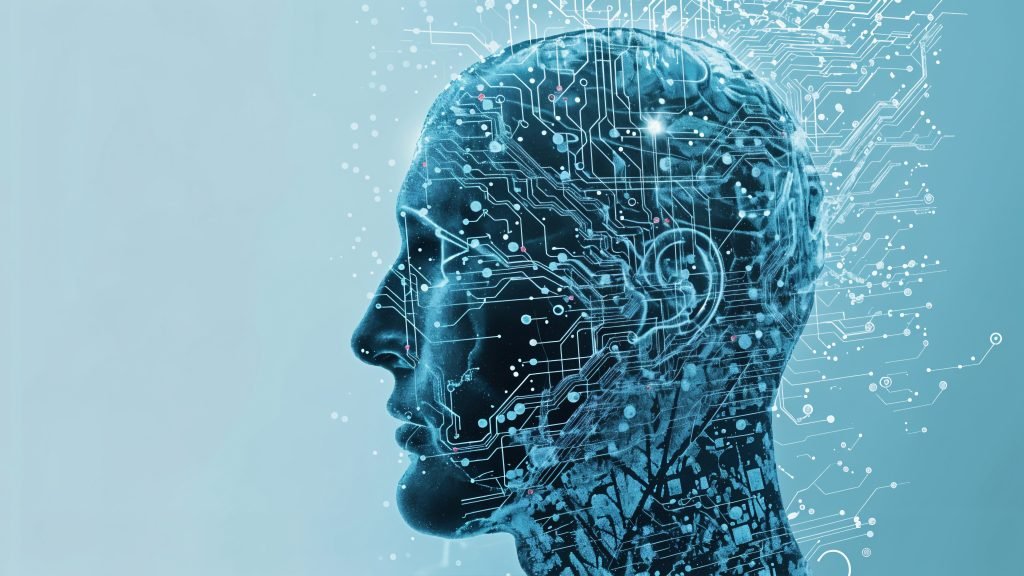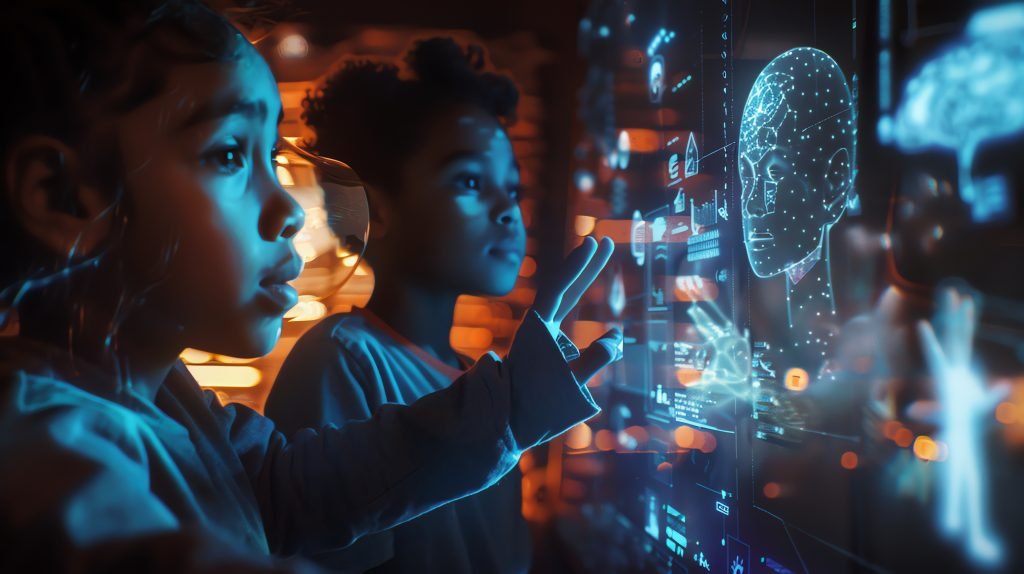Generative AI is one of the most fascinating advancements in the field of artificial intelligence. It goes beyond mere data analysis and prediction; instead, it can create original content based on the data it has learned from. But how does this technology work? What makes it capable of generating human-like text, images, and even videos? Let’s break it down step by step. In simple terms, Generative AI refers to a category of artificial intelligence that uses algorithms to generate new content from existing data. Unlike traditional AI, which operates within set boundaries, gen AI is more creative and versatile, capable of producing a wide range of outputs.
What is Generative AI?
Generative AI models use complex algorithms to generate new data that mimics or resembles the original data it was trained on. For example, these AI models can generate realistic human portraits, write essays, compose music, or even design new products. This technology is powered by machine learning, neural networks, and deep learning models.
The Evolution of Artificial Intelligence
Artificial intelligence has come a long way from its early days of rule-based systems. From simple automation tasks to self-learning systems like Generative AI, the evolution of AI has been rapid and transformative.

Understanding the Core Components of Generative AI
To truly grasp how generative AI works, it’s essential to understand the core technologies behind it. These include machine learning, neural networks, and deep learning.
Machine Learning
Machine learning is a subset of AI that allows systems to learn from data and improve over time without being explicitly programmed. In the context of generative AI, machine learning plays a crucial role in teaching the model to identify patterns and generate new outputs based on these patterns.
Neural Networks
Neural networks are a set of algorithms inspired by the human brain. They are made up of layers of nodes that process data in a structured way. When we talk about generative AI, neural networks are the backbone of many models, enabling them to learn complex relationships within data.
Deep Learning Models
Deep learning models take neural networks a step further by allowing multiple layers of learning. This makes them ideal for tasks like image recognition, speech generation, and AI-generated content. Deep learning is a driving force behind the success of generative AI.
The Technology Behind Generative AI
So, what’s under the hood of generative AI? Let’s explore how it actually works and the importance of data.
AI-generated Content
One of the most popular applications of generative AI is creating content. Whether it’s AI-generated articles, artwork, or even virtual environments for video games, the potential is vast. These models generate new content by analyzing and learning from large datasets, producing outputs that resemble the original input.
Role of Data in Generative AI
Generative AI thrives on data. The more data it’s exposed to, the better it can learn patterns and generate accurate, high-quality results. Data acts as the fuel, helping AI refine its outputs and improve over time.

Types of Generative AI Models
Generative AI doesn’t rely on just one type of model. There are several types, each suited for different kinds of tasks.
Variational Autoencoders (VAEs)
VAEs are a type of model used to generate data similar to the training set. They are widely used in generating images, helping machines understand how to create new visual content that resembles the original.
Generative Adversarial Networks (GANs)
GANs are one of the most exciting developments in Gen AI. They consist of two neural networks—a generator and a discriminator—that work together. The generator tries to create data, while the discriminator tries to distinguish between real and generated data. Over time, this results in highly realistic outputs, such as photorealistic images.
Transformer Models
Transformer models are mainly used in generating human-like text. GPT-3 and other large language models rely on transformers to understand context and generate coherent, flowing text.
How Do Generative Models Learn?
The magic of generative AI lies in its learning process.
Training Through Data: Generative models require vast amounts of data to learn from. By analyzing and identifying patterns in the data, these models can generate new content that closely mimics the original.
Reinforcement Learning: In some cases, reinforcement learning is used, where models learn from trial and error, improving their performance with each iteration. This technique is commonly used in applications such as game design and robotic movement.
Key Applications of Generative AI
Generative AI has many exciting applications across industries, changing the way we work, create, and even entertain.
AI in Content Creation: From blog posts to social media content, generative AI tools like GPT can assist writers by generating engaging text in seconds.
AI for Image and Video Generation: Gen AI models are capable of creating lifelike images and videos. This is particularly useful in entertainment, virtual reality, and even medical imaging.
Text-to-Speech and Speech-to-Text Models: AI tools can now generate realistic speech and convert spoken language into text with incredible accuracy, making them essential in assistive technologies and communication apps.
The Role of Deep Learning in Generative AI: Deep learning models are crucial for making generative AI work as effectively as it does.
How Deep Learning Enables AI to Create
By using layers of data processing, deep learning models enable generative AI to understand the intricate patterns needed to create high-quality content.
Convolutional Neural Networks (CNNs) and Recurrent Neural Networks (RNNs): CNNs and RNNs are specific types of neural networks that are used in tasks like image generation and language modeling, helping AI produce coherent outputs in both visual and textual forms.
Benefits of Generative AI in Various Industries
The potential of generative AI extends across various fields:
Healthcare: In healthcare, Gen AI can assist in medical image generation, diagnosis support, and even drug discovery.
Entertainment: Gen AI is transforming the entertainment industry, from virtual actors in movies to creating immersive gaming experiences.
Marketing: Marketers use AI tools to generate tailored content, automating much of the creative process and making customer engagement more personalized.
Education: Generative AI can create customized learning materials, helping educators tailor content to individual student needs.
Challenges and Ethical Considerations: While Gen AI is powerful, it also raises ethical concerns.
Bias in AI-generated Content: Since AI models learn from data, they may inherit biases present in that data, which can lead to biased or skewed outputs.
Deepfakes and Misinformation
The rise of deep fakes—realistic fake media generated by AI—poses a significant challenge in verifying the authenticity of online content, leading to concerns about misinformation and ethical challenges. The ability of Generative AI to create highly realistic fake images, videos, and audio has already led to misuse, raising alarms about privacy and security. These deepfakes can be manipulated for malicious purposes, such as spreading false information or defaming individuals.
The Future of Generative AI
As Gen AI continues to evolve, its potential applications will expand even further. While the technology is still maturing, the future promises even more sophisticated AI tools that can enhance creativity and productivity across various sectors.
Advancements in AI Tools
We can expect to see major advancements in AI-generated content, design tools, and automation systems that will allow companies and individuals to work more efficiently. AI tools could revolutionize industries such as marketing, customer service, and even product development by enabling businesses to automate repetitive tasks and improve creativity through AI-generated insights.
AI in Everyday Life
From AI chatbots to virtual assistants, AI is already becoming integrated into our daily lives. In the future, Gen AI could take personalization to the next level by creating hyper-customized experiences, from tailored learning materials to personalized marketing messages.
Conclusion
Generative AI is not just a technological breakthrough—it represents a major shift in the way humans and machines collaborate to create and innovate. As technology continues to evolve, it will have a significant impact across industries and everyday life. However, with great power comes great responsibility, and it will be essential for developers and users to address the ethical and social challenges that come with AI-generated content.
For companies looking to incorporate AI-driven solutions, Optominds, the best AI company in Australia, is at the forefront of providing cutting-edge AI services. With expertise in Gen AI, machine learning, and other advanced technologies, Optominds can help businesses harness the full potential of AI to achieve their goals and stay ahead of the competition.
FAQs about Generative AI
1. What distinguishes Generative AI from other AI models?
Gen AI focuses on creating new content rather than just analyzing or classifying data. This makes it different from traditional AI models, which are often designed for tasks like recognizing patterns or making predictions.
2. Can AI-generated content fully replace human creativity?
While Gen AI can assist with content creation, it is unlikely to fully replace human creativity. AI can mimic patterns in data, but true creativity involves emotions, experiences, and cultural contexts that AI cannot replicate.
3. How do AI tools ensure the quality of generated content?
AI tools rely on large datasets to learn and improve the quality of the content they generate. However, the quality of AI-generated content can vary depending on the data used for training and the complexity of the task. Human oversight is often required to ensure accuracy and relevance.
4. Is Generative AI accessible to small businesses?
Yes, many Generative AI tools are becoming more accessible to small businesses. These tools can help with tasks such as content creation, design, and marketing automation, providing valuable support for small businesses without the need for large resources.
5. How can companies responsibly use Generative AI?
Companies can use Gen AI responsibly by ensuring transparency, avoiding biased datasets, and using the technology ethically. This includes being mindful of issues like privacy, and data security, and avoiding the creation of harmful or misleading content.

